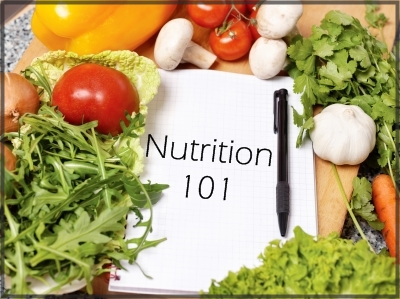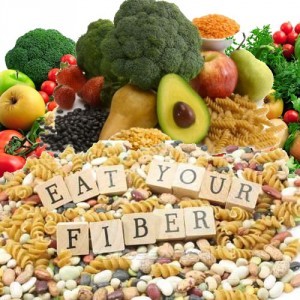 You probably know that fiber is important to good health, but do you know if you are getting enough? Even with the availability of fiber rich foods to choose from, Americans don’t eat enough . On average, we get less than half of what we need of this nutrient. The average adult only eats 15 grams of fiber per day.
You probably know that fiber is important to good health, but do you know if you are getting enough? Even with the availability of fiber rich foods to choose from, Americans don’t eat enough . On average, we get less than half of what we need of this nutrient. The average adult only eats 15 grams of fiber per day.
Fiber is more than just the stuff that makes your bowels move. Fiber is plant matter packed with antioxidants and phytochemicals, helps you feel “full” longer, and much, much more! But what is more important to know that a lack of fiber rich foods in your diet can lead to serious health related problems.
In this section, we will be discovering why fiber is so important to your over all health as well as achieving your weight loss goals and how to get more fiber into your diet.
What is Fiber?
The fiber we consume is called dietary fiber, it is a type of carbohydrate that is found in plant foods, also known as roughage or bulk. It is made up of plant materials, which unlike other food components, cannot be digested in the human body. It is an important nutrient with many health benefits. Eating fiber has been shown to help keep your digestive system running smoothly, support heart health and help maintain blood sugar levels that are already within the normal range. Increasing your fiber can also aid in weight loss because meals containing more fiber are digested more slowly and can help make you feel full longer. Fiber can be classified as soluble or insoluble, each performing different functions.
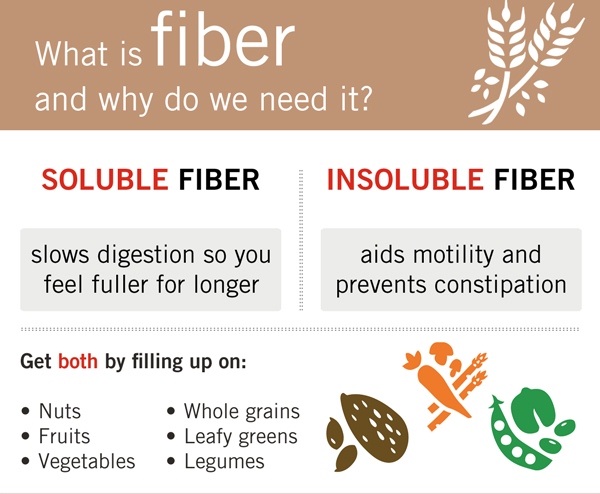 What is the Function of Soluble and Insoluble Fiber
What is the Function of Soluble and Insoluble Fiber
There are two types of fiber and both have different health benefits.
Insoluble fiber: Our digestive tract is not able to break down insoluble fiber. It absorbs water into its structure, thereby improving motility by softening the stool as well as increasing stool size. Insoluble fiber cleans the colon like a scrub brush picking up waste particles and moving them out of the body. Studies suggest that a diet high in insoluble fiber may protect against cancer by binding carcinogens in the digestive tract. It is found in fruits and vegetables and in higher quantities, whole grains.
Soluble fiber: This form of fiber helps lower blood cholesterol when eaten regularly as part of a diet low in saturated fat and cholesterol, assists in regulating blood sugar levels and is important in weight reduction and maintenance. Try to get 10 to 25 grams of soluble fiber into your diet a day.
 How Does Eating Cheerio”s Lower Your Cholesterol – Soluble fiber has been top-of-mind recently as it plays a role in heart health. It has been proven to lower LDL or “bad cholesterol” levels, reduce blood vessel inflammation and blood pressure. Cheerio’s and other foods high in soluble fiber can help you bring your cholesterol numbers into a healthy range by the way they pass through the body. Here’s how: When there is an excess of cholesterol — a soft waxy substance present in fats found in the blood stream and cells — it can build up on the artery walls, causing detrimental effects to your health. When food is consumed, the liver releases bile to help digest food. Soluble fiber interferes with the absorption of bile and cholesterol, decreasing the amount entering the bloodstream. This is good news for your heart: with less “bad cholesterol” floating around in your blood, less gathers on your artery walls.
How Does Eating Cheerio”s Lower Your Cholesterol – Soluble fiber has been top-of-mind recently as it plays a role in heart health. It has been proven to lower LDL or “bad cholesterol” levels, reduce blood vessel inflammation and blood pressure. Cheerio’s and other foods high in soluble fiber can help you bring your cholesterol numbers into a healthy range by the way they pass through the body. Here’s how: When there is an excess of cholesterol — a soft waxy substance present in fats found in the blood stream and cells — it can build up on the artery walls, causing detrimental effects to your health. When food is consumed, the liver releases bile to help digest food. Soluble fiber interferes with the absorption of bile and cholesterol, decreasing the amount entering the bloodstream. This is good news for your heart: with less “bad cholesterol” floating around in your blood, less gathers on your artery walls.
How Much Dietary Fiber Do You Need?
Most women should get at least 25 grams and most men 38 grams each day to gain all the health benefits of fiber, according to the Institute of Medicine’s Dietary Reference Intake. The problem is that most Americans get only about half that when not on a diet and even less when dieting, especially on low-carb diets.
Tufts University researcher and professor of nutrition Susan Roberts, PhD, has shown that people who eat 35 to 45 grams of fiber a day are less hungry when losing weight and lose more weight than people who eat less fiber. (But beware of consuming fiber as a bulk laxative; it can sap your body of needed nutrients and vitamins.)
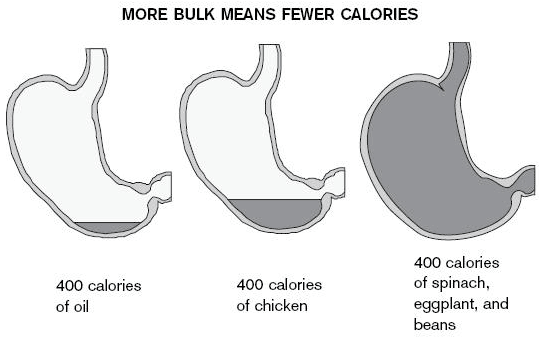 High-fiber Diets and Weight Loss
High-fiber Diets and Weight Loss
If you’re overweight and want some help losing weight, start eating foods high in fiber. Dietary fiber is not a magic weight loss weapon, but it has the power to help fill you up without filling you out.
Here’s why: One of the most effective ways to lose those extra pounds is to control hunger, the dieter’s Achilles heel. Hunger is affected by many things, including when you eat, and the composition of your meals — the amount of fats, carbohydrates, protein, fiber, and water content. Eating healthy high-fiber foods makes you feel full, so you can resist eating more food than you need. Fibrous foods also can take longer to chew, giving your brain time to get the signal that you have had enough to eat. Studies show that most people eat about the same weight of food each day.
If you choose high-fiber, water-rich foods — such as broth-based vegetable soups, salads, fruits, and vegetables — instead of foods without fiber and water, you can eat the same weight of food but feel full on fewer calories.
A 2009 study in the journal Appetite compared the satiety or fullness factor of apples, applesauce, and apple juice with added fiber before lunch. People who ate an apple before lunch ate 15% fewer calories than those who ate the applesauce or drank apple juice. This suggests that the fiber in the whole apple was more filling even when compared to the juice that had added fiber.
Beyond the fiber content, crunching and chewing a whole piece of fruit stimulates your senses and takes longer to eat. So psychologically, it may also be more satisfying than beverages or soft foods. Chewing also promotes saliva and the production of stomach juices that help fill the stomach.
Fiber at Breakfast Is a Healthy Weight Loss Habit
In its tracking of the eating habits of successful dieters — those big losers who have kept weight off for years — the National Weight Control Registry has found that most eat breakfast regularly. And cereal is one of their morning rituals.
 Does Type of Fiber Affect Weight Loss?
Does Type of Fiber Affect Weight Loss?
Fibers come in a variety of forms:
Fiber is either soluble or insoluble: Soluble dissolves in water, insoluble does not. Both of these types are fiber are found naturally in fruits, vegetables, whole grains, legumes, and nuts. “Dietary” fiber refers to the fiber found naturally in the foods that we eat. “Functional” fibers such as inulin are added to packaged foods to boost their fiber content. These fibers are isolated or extracted from a plant or animal source, or they are manufactured.
Although all fiber is healthy, research indicates that fiber from whole foods may aid weight loss the most – likely because those high-fiber foods are also low in calories.
No one fiber is perfect, so eating a wide variety of fibers is the perfect solution to gain all the health benefits of fiber. Not only will you trim your waistline with a high-fiber diet rich in fruits, vegetables, whole grains, legumes, and nuts, but also reduce the risk for heart disease, diabetes, obesity, diverticulitis, and constipation.
Experts are quick to point out that fiber alone won’t peel off the pounds. You still need to eat a healthy, calorie-controlled diet and get regular physical activity. But controlling or maintaining your weight is easier with a diet rich in fiber.
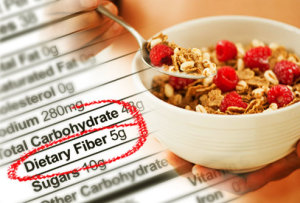 High-Fiber Super Foods
High-Fiber Super Foods
Start Your Day With Whole Grains – Most whole grains are a great source of fiber. Start at breakfast: Look for whole-grain cereal or oatmeal with 3 or more grams of fiber per serving. Add fruit and you’ll be on your way to the daily goal of 38 grams for men and 25 grams for women.
Fiber and Fresh Fruit – Any type of fresh fruit is a healthy snack. But when it comes to fiber, all fruits are not created equal. One large Asian pear has a whopping 9.9 grams of fiber. Other high-fiber fruits include raspberries (4 grams per 1/2 cup), blackberries (3.8 grams per 1/2 cup), bananas (2.4 grams each), and blueberries (2 grams per 1/2 cup). Pears and apples — with the skin on — are also high-fiber choices.
Try Whole-Grain Bread and Crackers – Keep the grains coming at lunch. Choose Whole grain bread instead of white. Dip whole-grain crackers into your favorite healthy spread. Whole grains include the entire grain — bran, germ, and endogerm — giving you all the nutrients of the grain. Studies show that adding whole grains and other high-fiber foods to your diet may also reduce your risk of heart disease and type 2 diabetes.
Eat Your Vegetables – High-fiber veggies include artichoke hearts, green peas, spinach, corn, broccoli, and potatoes. But all vegetables have some fiber — from 1 to 2 grams per 1/2-cup serving. To boost your fiber intake, add vegetables to omelets, sandwiches, pastas, pizza, and soup. Or try adding interesting vegetables — such as beets, jicama, Jerusalem artichokes, or celeriac — to a salad or other meals.
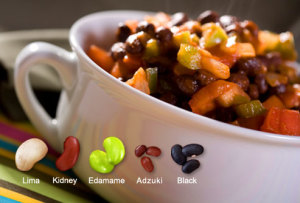 Fiber From Beans – From adzuki to Great Northern, beans are high in fiber, packed with protein, and low in fat. Try eating beans instead of meat twice a week for a fiber boost. Use them in soups, stews, salads, casseroles, eggs, and with rice and pasta dishes. Or boil edamame beans for four minutes and sprinkle with salt for a healthy snack. Be sure to wash down all that extra fiber with plenty of water to avoid constipation and gas.
Fiber From Beans – From adzuki to Great Northern, beans are high in fiber, packed with protein, and low in fat. Try eating beans instead of meat twice a week for a fiber boost. Use them in soups, stews, salads, casseroles, eggs, and with rice and pasta dishes. Or boil edamame beans for four minutes and sprinkle with salt for a healthy snack. Be sure to wash down all that extra fiber with plenty of water to avoid constipation and gas.
Fiber in Peas and Other Legumes
Lentils and peas are related to beans and share their dietary profile – high in fiber and protein and low in fat. Lentils cook more quickly than most other legumes and are a favorite in soups and stews. Cooked chickpeas can be added whole to salads, or blended to make hummus. All legumes are a healthy addition to your diet. But add them slowly to help prevent bloating and gas.
Fiber in Dried Fruit – Prunes are well known for their ability to help digestion. That’s in part because of their fiber content — about 3.8 grams in a 1/2 cup. Most dried fruits are loaded with fiber, which can help regulate bowel movements and relieve constipation. Try having a handful of dried figs, dates, raisins, or apricots as a snack. Or chop them up and sprinkle on top of cereal or whole-grain dishes.
Nuts, Seeds, and Fiber – Many people steer clear of nuts and seeds because they tend to be high in calories and fat. However, they can be a great source of fiber and other nutrients. A 1/4 cup of sunflower seed kernels, for example, has 3.9 grams of fiber. One ounce of almonds has 3.5 grams. Try adding chopped nuts or seeds to salads or yogurt. Or enjoy a handful of roasted nuts or seeds for a healthy afternoon snack.
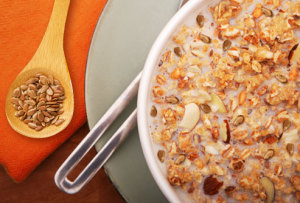 Add Flaxseed for Fiber – The seed of the flax plant can be an excellent source of fiber, providing 2.8 grams per tablespoon of whole seeds. Flaxseed is often used as a laxative. But studies have shown that it also may help reduce cholesterol levels and decrease hot flashes. Add whole flaxseeds to breads or other baked goods. Or sprinkle ground flaxseed into a smoothie or onto cooked vegetables.
Add Flaxseed for Fiber – The seed of the flax plant can be an excellent source of fiber, providing 2.8 grams per tablespoon of whole seeds. Flaxseed is often used as a laxative. But studies have shown that it also may help reduce cholesterol levels and decrease hot flashes. Add whole flaxseeds to breads or other baked goods. Or sprinkle ground flaxseed into a smoothie or onto cooked vegetables.
Enjoy Whole Grains with Dinner – Enjoy brown rice instead of white with your meal. Or try whole-grain noodles. For something different, make a dish with millet, quinoa, or bulgur — whole grains that are packed with fiber.
Fiber Tips: Add Fiber Wisely and Slowly
Before you start, keep a few things in mind: Making rapid changes to your diet is not advised. When you increase fiber, you should increase your water intake along with it. Increase fiber gradually to prevent excess gas and bloating and to allow your gastrointestinal tract time to adjust. And if you have gastrointestinal diseases, including constipation, check with your doctor first.
Don’t Forget to Hydrate
As you increase your fiber intake, increase your fluids as well. Fiber pulls water into the intestines. Without adequate hydration, fiber can actually aggravate rather than alleviate constipation. So try to drink at least eight glasses of water a day. With a little creativity, some pre-planning, and a few new additions to your grocery list, you’ll be well on your way to meeting your daily fiber requirements with wholesome, delicious foods. Just be sure not to overwhelm yourself with too many changes at once. Pick one or two ideas to try each week and stick with those that work best for you and your family.
So how do you get more fiber into your daily diet?
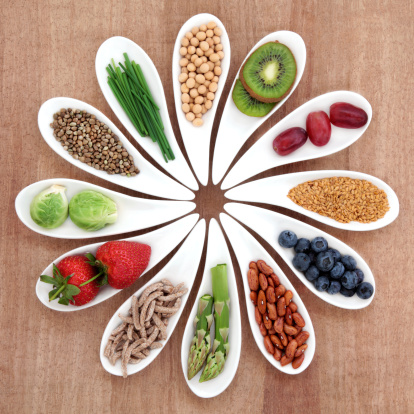 Simple Ways to Increase Fiber in Your Diet
Simple Ways to Increase Fiber in Your Diet
Choose a wide variety of fiber sources – Plant foods provide two types of fiber: soluble fiber (which increases the feeling of fullness) and insoluble fiber (which aids the digestive system and promotes regularity). Peas, beans, oats, and fruits are sources of soluble fiber, and whole grains and vegetables provide the majority of insoluble fiber. Some foods provide both!
Pick whole grain foods over refined carbohydrates – Whole grain foods are a natural source of dietary fiber. Unlike refined carbohydrates (think white bread), whole grains retain the kernel’s fiber-rich outer shell, known as bran. To identify whole grains, look for these ingredients on labels: whole wheat, hard red winter wheat, barley, triticale, oats, rye, brown rice, buckwheat, millet, oatmeal, and bulgur. When looking for fiber-rich whole grains, not all whole grains are made the same. Read the Nutrition Facts panel to identify the fiber content for whole grains.
Begin your day with a fiber boost – You’ve probably heard that breakfast is the most important meal of the day, but starting your day with the right kind of fuel is equally important. Choose breakfast cereals with at least 3 grams of fiber per serving opt for whole grain cereals, oatmeal or grab a handful of fiber-rich berries.
Pick high-fiber snacks when the midday munchies hit – Avoid high-calorie, high-fat and low-fiber vending machine options by packing fiber-rich snacks. Perfect answers to an afternoon slump include whole grain crackers, granola bars, homemade trail mix, mixed nuts, and dried figs or apricots. Popcorn—a whole grain—is another high-fiber snack.
Add fresh fruit to meals and snacks – Whether added to cereal, eaten as a snack, or enjoyed as a simple dessert, fresh fruit is a sweet way to add fiber to your diet. The fruits highest in fiber include apples, berries, prunes, pears and oranges.
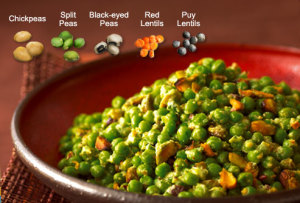 Load up on legumes – High-fiber legumes like beans, peas, and lentils — are among the best sources of fiber. Add one serving to your day by incorporating legumes into salads, soups, and casseroles, or puree them to make a delicious dip.
Load up on legumes – High-fiber legumes like beans, peas, and lentils — are among the best sources of fiber. Add one serving to your day by incorporating legumes into salads, soups, and casseroles, or puree them to make a delicious dip.
Explore the globe – American food tends to be lower in fiber than other ethnic cuisines. Take your taste buds on an adventure and add fiber to your diet by dining on Mexican, Middle Eastern, and Mediterranean fare. Tasty options include black bean burritos, hummus, tabbouleh, bean salads, and whole wheat couscous.
Bake your own high-fiber goodies – Pump up the fiber content of your own baked goods by using whole wheat flour in place of all purpose white flour (finely milled whole wheat pastry flour is a gentle shift) in recipes, adding oatmeal to cookies, or loading homemade muffins with raisins, berries, or bananas.
Fiber Recap -Try these tips for adding more low-calorie foods to your meal plan to boost fiber while keeping calories in check:
*Eat whole fruits instead of fruit juice.
*Snack on veggies.
*Make vegetables a main course.
*Add a filling vegetable salad instead of a starchy salad as a side dish with meals.
*Enjoy a bowl of vegetable-based broth soup before meals.
*Start the day with a high-fiber cereal topped with fruit and low-fat dairy.
*Eat more beans.
*Make all your grains whole and limit them to a few servings each day.
*Add nuts and seeds to your weight loss plan, but keep the portions small because they are high in fiber and calories.
You may also like:
- Six Weeks to a Healthier Diet
- Smart Start Menu Series
- Tips for putting together healthy menus
- Walk Talk Series
Just click on the link to take you to the topics in the series
- Nutrition 101 – Introduction to basic Nutrition
- Nutrition 101 – Calories
- Nutrition 101 – Carbohydrates
- Nutrition 101 – Proteins
- Nutrition 101 – Fats
- Nutrition 101 – Micronutrients ( Vitamins and Minerals)
- Nutrition 101 – Fiber
- Nutrition 101 – Water
- Nutrition 101- Recap – 5 Tips to Eat More Nutritiously

